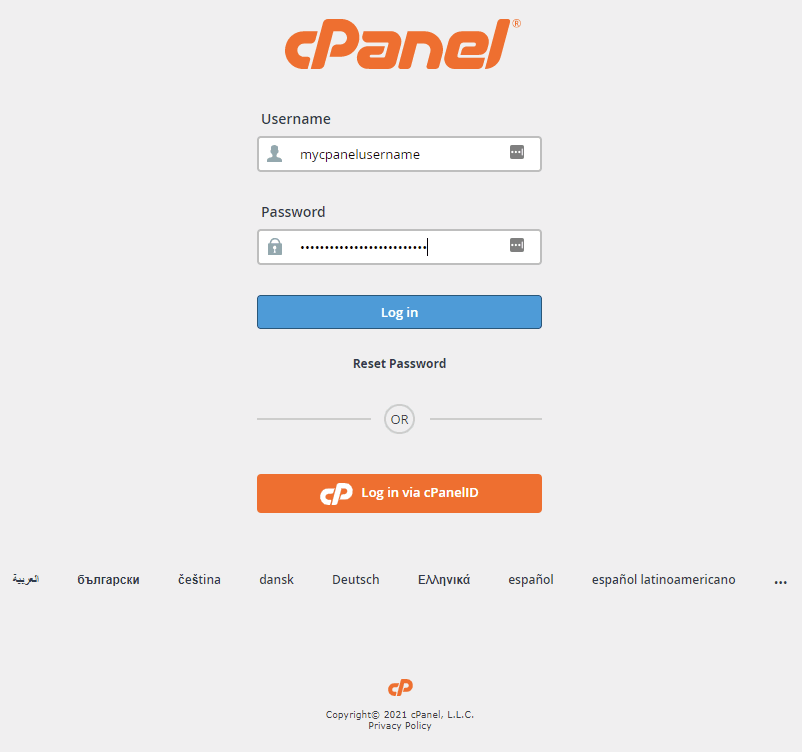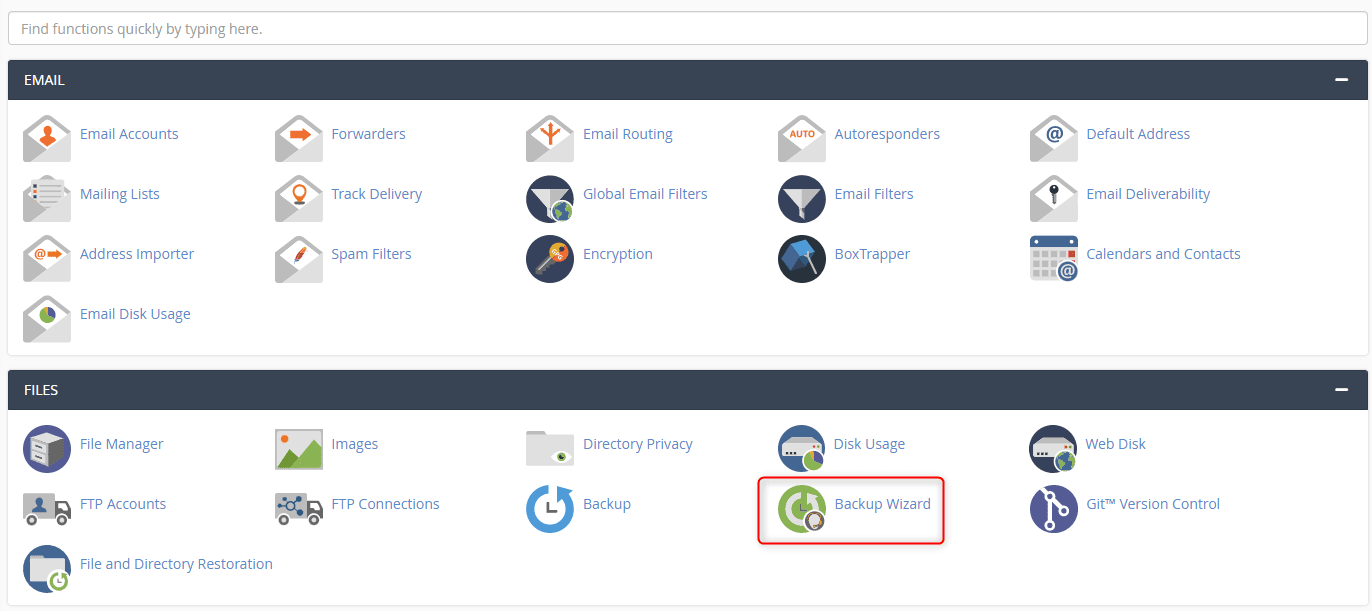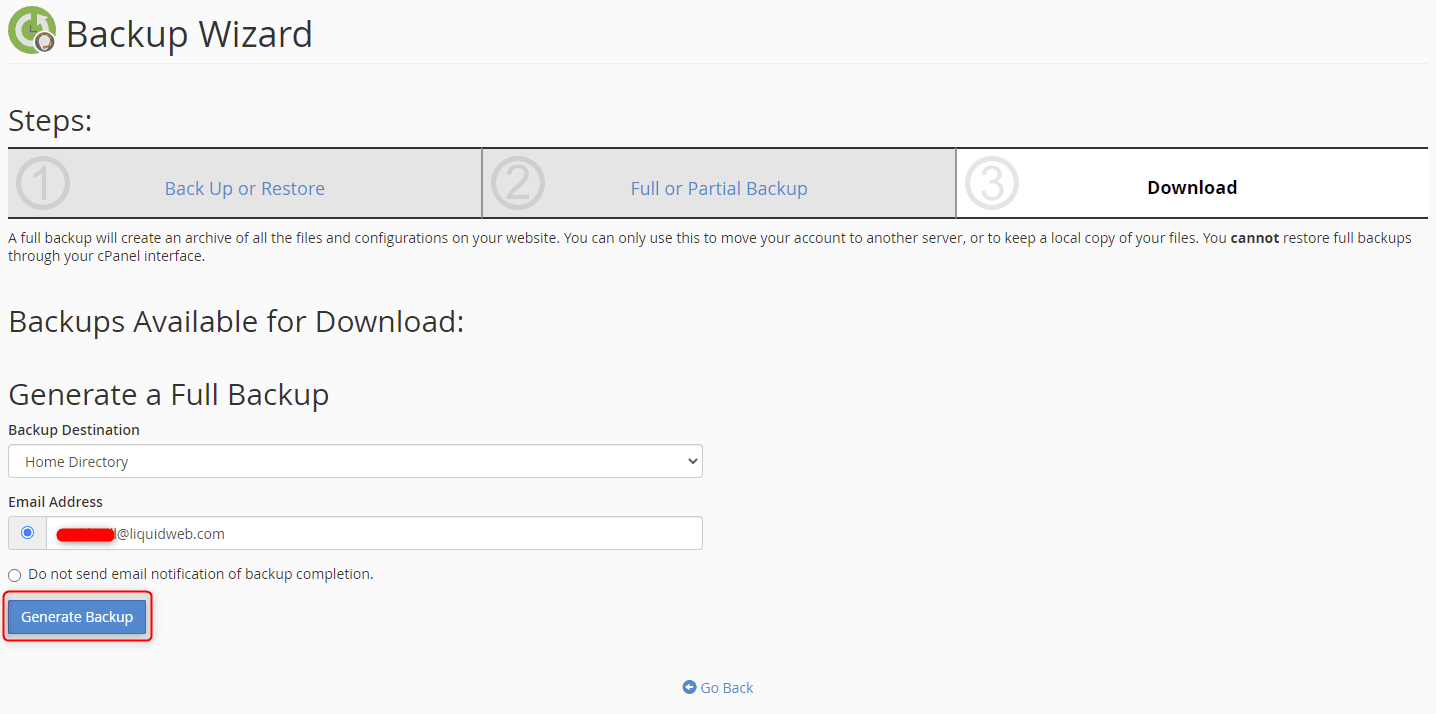How to Backup Your Website in cPanel
II. How to Create an Email Account in cPanel
III. How to Set a Default Address in cPanel
IV. How to Set Up an Autoresponder in cPanel
V. How to Set Up Email Forwarding in cPanel
VI. How to Set Up Email Filters in cPanel
VII. How to Enable Spam Protection in cPanel
VIII. How to Add an MX Entry in cPanel
IX. How to Use Webmail From Within cPanel
X. How to Change Your cPanel Password
XI. How to Update Your Contact Information in cPanel
XII. How to Change Your cPanel Theme
XIII. How to Change the Primary Language in cPanel
XIV. How to Add a Record With the DNS Zone Editor in cPanel
XV. How to Backup Your Website in cPanel
XVI. How to Use the Disk Space Usage Tool in cPanel
XVII. How to Create Additional FTP Accounts in cPanel
XVIII. How to Password Protect a Directory in cPanel
XIX. How to Use the IP Blocker in cPanel
XX. How to Set Up Hotlink Protection in cPanel
XXI. How to Create a Subdomain in cPanel
XXII. How to Create an Addon Domain in cPanel
XXIII. How to Create a Domain Alias in cPanel
XXIV. How to Set Up Domain Redirects in cPanel
XXV. How to Create a MySQL Database in cPanel
XXVI. How to Use the Index Manager in cPanel
XXVII. How to Create Custom Error Pages in cPanel
XXVIII. How to Set Up a Cron Job in cPanel
Maintaining your website means making sure software updates don’t take down your site. Knowing how to backup your website in cPanel allows you to ensure you can restore your site if an update happens. Use this guide to ensure your website is properly backed up for updates, testing, and other maintenance you need to perform.
Requirements
- A server with cPanel.
- Login credentials for cPanel.
Backup Your Website in cPanel
1. Login to cPanel.

2. Under Files, click Backup Wizard.

3. From the main backup screen, you can backup or restore the files in your hosting account. Click Back Up.

4. You have the choice of a full backup or a partial backup with the available selected files or directories. Choosing one of the selections under Select Partial Backup allows you to use the Backup Wizard to later perform a restore of those files or directories. For this tutorial, click Full Backup.

5. Under Backup Destination, select where your backup will be stored from the dropdown menu. Under Email Address, choose to enter an email address for a backup completion notification or not to receive a notification at all. Once the selections are complete, click Generate Backup.

6. You will receive a blue confirmation that the full backup is in progress. If you chose to have an email sent, the system will advise you of the email you chose.

7. Clicking Go Back takes you back to the Download page where you find the Backups Available for Download section and a tar.gz file you can download to your local device.

Wrapping Up
This guide on how to backup your website in cPanel helps you manage your site maintenance without fear of breaking it without the option of restoration. While there are other options for long-term backups, taking a quick backup in cPanel gives you peace of mind in addition to flexibility.
Also, cPanel is available on Liquid Web’s VPS Hosting, Cloud Dedicated Servers, and Dedicated Servers. For more information or to get started, contact our sales team.
Check out the next tutorial in our cPanel series on How to Use the Disk Space Usage Tool in cPanel.
Related Articles:

About the Author: Ronald Caldwell
Ron is a Technical Writer at Liquid Web working with the Marketing team. He has 9+ years of experience in Technology. He obtained an Associate of Science in Computer Science from Prairie State College in 2015. He is happily married to his high school sweetheart and lives in Michigan with her and their children.
Our Sales and Support teams are available 24 hours by phone or e-mail to assist.
Latest Articles
How to use kill commands in Linux
Read ArticleChange cPanel password from WebHost Manager (WHM)
Read ArticleChange cPanel password from WebHost Manager (WHM)
Read ArticleChange cPanel password from WebHost Manager (WHM)
Read ArticleChange the root password in WebHost Manager (WHM)
Read Article


